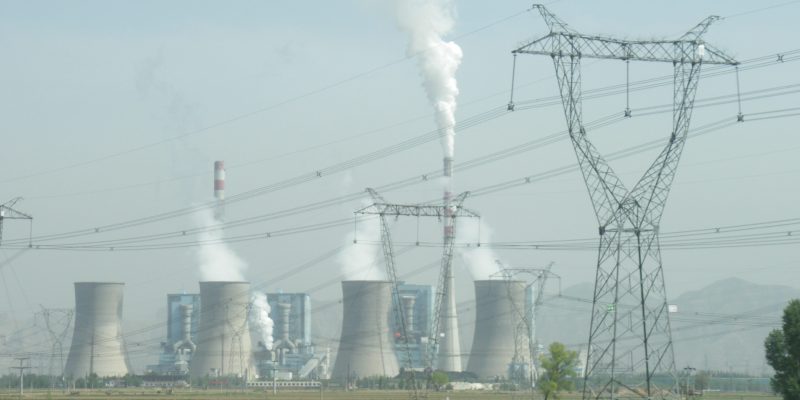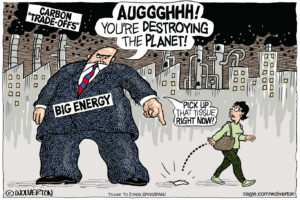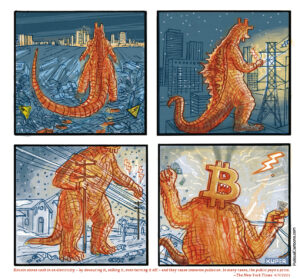Carbon Emissions Expected to Show an Increase for 2017
After a period of stability, a 2 percent rise is likely to be recorded this year as developing countries burn more fossil fuels—imperiling the Paris climate goals, scientists say. Increasing coal use, as at this facility in China, is one factor driving emissions up. (Kleineolive / Wikimedia Commons)
Increasing coal use, as at this facility in China, is one factor driving emissions up. (Kleineolive / Wikimedia Commons)
The world’s carbon emissions are expected to show a lurch upwards this year, by around 2%, after three years of staying virtually level. This is a significant setback to efforts to slow the speed at which the Earth is warming, and shows the fragility of the international climate treaty, the Paris Agreement, scientists say.
From 2014 to 2016 global CO2 emissions from fossil fuels and industry grew hardly at all. This stable period, following a growth in emissions of more than 3% annually in the 2000s, fed hopes that many countries were succeeding in separating successful economy-building from increases in world temperatures.
These are continuing to rise as a consequence of warming driven by ever higher greenhouse gas levels in the atmosphere, in response to the profligate global consumption of fossil fuels.
But the publication by the Global Carbon Project (GCP) of its annual analysis of trends in the global carbon cycle, the authors say, highlights how precarious the recent slowdown in global emissions growth really is. Its publication comes as the UN’s 2017 climate summit, COP 23, takes place in Bonn.
They say the growth in 2017 is mainly due to stronger emissions growth in China and other developing countries, and their findings show that the Paris goals could quickly slip out of reach.
The GCP has released three papers in the journals Nature Climate Change (verification), Environmental Research Letters (recent trends), and Earth System Science Data Discussions (the full carbon cycle).
“The slowdown in emissions growth from 2014 to 2016 was always a delicate balance, and the likely 2% increase in 2017 clearly demonstrates that we can’t take the recent slowdown for granted”, said Robbie Andrew, a senior researcher at CICERO, the Centre for International Climate Research in Oslo, and co-author of the studies.
“Even though we project carbon dioxide emissions from fossil fuels and industry to increase 2% in 2017, large uncertainties persist, and growth [rates] between 1% and 3% are distinct possibilities given difficulties in making projections.
“Global commitments made in Paris in 2015 to reduce emissions are still not being matched by actions,” said Glen Peters, a research director at CICERO who led one of the studies.
“It is far too early to proclaim that we have turned a corner and started the journey towards zero emissions”.
But the GCP, a global research project within the Future Earth research initiative on global sustainability, says that while emissions may prove to have risen by 2% in 2017, it is not possible to say whether this is a return to growth, or a one-off increase.
China, the world’s largest greenhouse gas emitter, drove the unexpected and rapid growth of emissions in the 2000’s and was behind the unexpected recent slowdown. It is again a key driver in 2017.
“China generates nearly 30% of global carbon dioxide emissions, and the ups and downs of the Chinese economy leave a signature on global emissions growth”, said Jan Ivar Korsbakken, senior researcher at CICERO and co-author.
Chinese emissions went down about 1% in 2015 and were flat in 2016, but are projected to increase between 0.7% and 5.4% in 2017, with a best estimate using preliminary data of 3.5% in 2017.
US emissions are projected to decline by 0.4% this year, more slowly than the decline of 1.2% per year averaged over the last decade because of a return to growth in coal use.
The GCP expects India’s emissions to rise by 2%, much lower than the 6% per year averaged over the previous decade, because of significant government interventions in the economy.
It “tentatively” projects European emissions will decline by 0.2% in 2017, slower than the decline of 2.2% per year averaged over the previous decade. Emissions in the remaining countries, representing about 40% of the global total, are expected to increase by 2.3%.
Global CO2 emissions from fossil fuels and industry will reach around 37 billion tonnes in 2017, the analysis says, a record high. Those from all human activities (fossil fuels, industry, and land-use change) will reach around 41bn tonnes, similar to the record high in 2015.
“The 2015/2016 El Niño caused hot and dry conditions in the tropics that reduced the uptake of carbon by forests and led to a record rise in atmospheric carbon dioxide concentrations”, said Professor Corinne Le Quéré, director of the Tyndall Centre at the University of East Anglia, UK, who led the main analysis.
It could take as long as 10 years for scientists to confidently verify a sustained change in emissions using measurements of atmospheric concentrations of carbon dioxide.
Professor Le Quéré said: “The Global Stocktake under the Paris Agreement will occur every five years, and this puts immense pressure on the scientific community to develop methods and perform measurements that can truly verify changes in emissions within this five-yearly cycle”.
Your support is crucial…With an uncertain future and a new administration casting doubt on press freedoms, the danger is clear: The truth is at risk.
Now is the time to give. Your tax-deductible support allows us to dig deeper, delivering fearless investigative reporting and analysis that exposes what’s really happening — without compromise.
Stand with our courageous journalists. Donate today to protect a free press, uphold democracy and unearth untold stories.









You need to be a supporter to comment.
There are currently no responses to this article.
Be the first to respond.